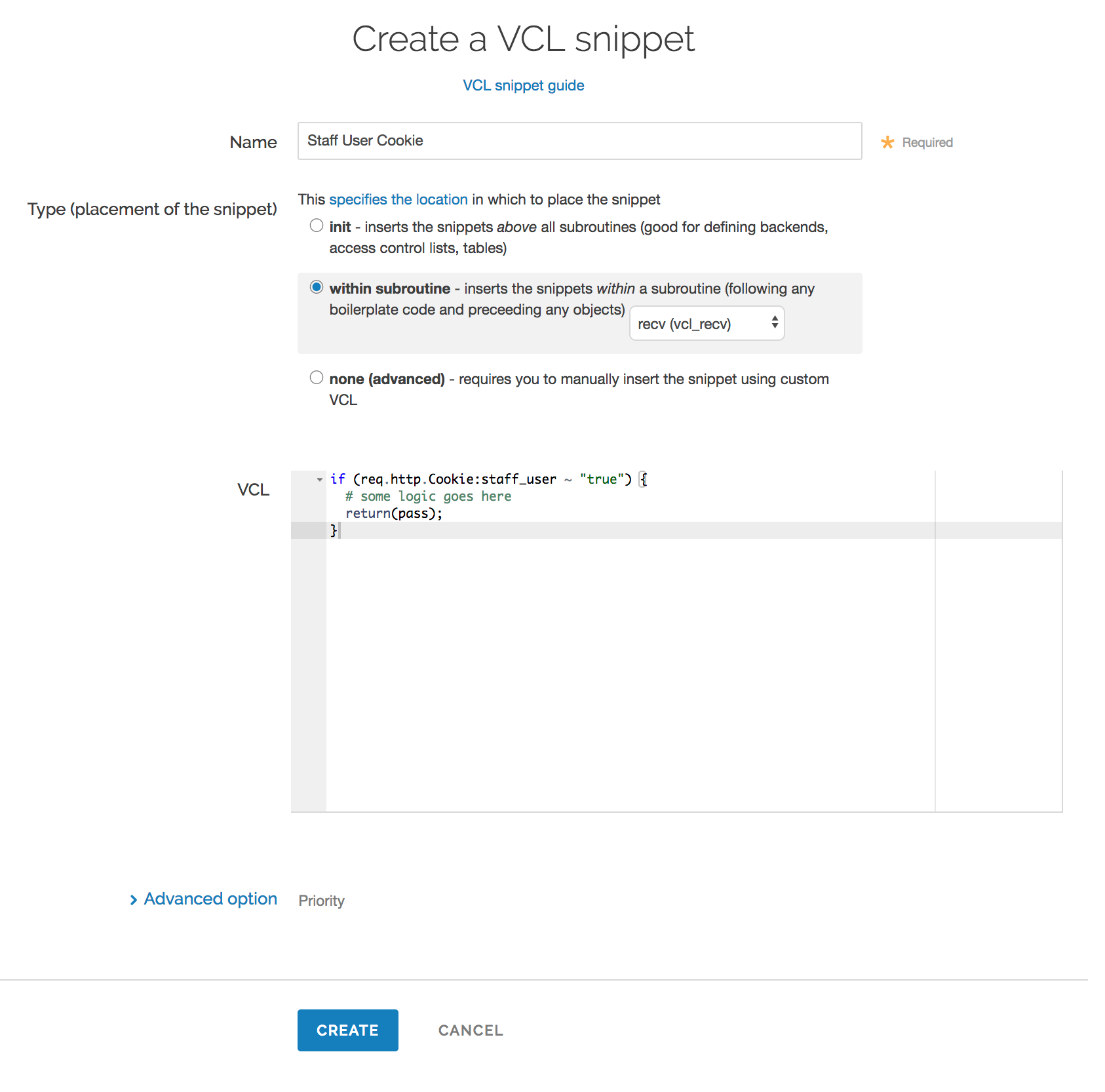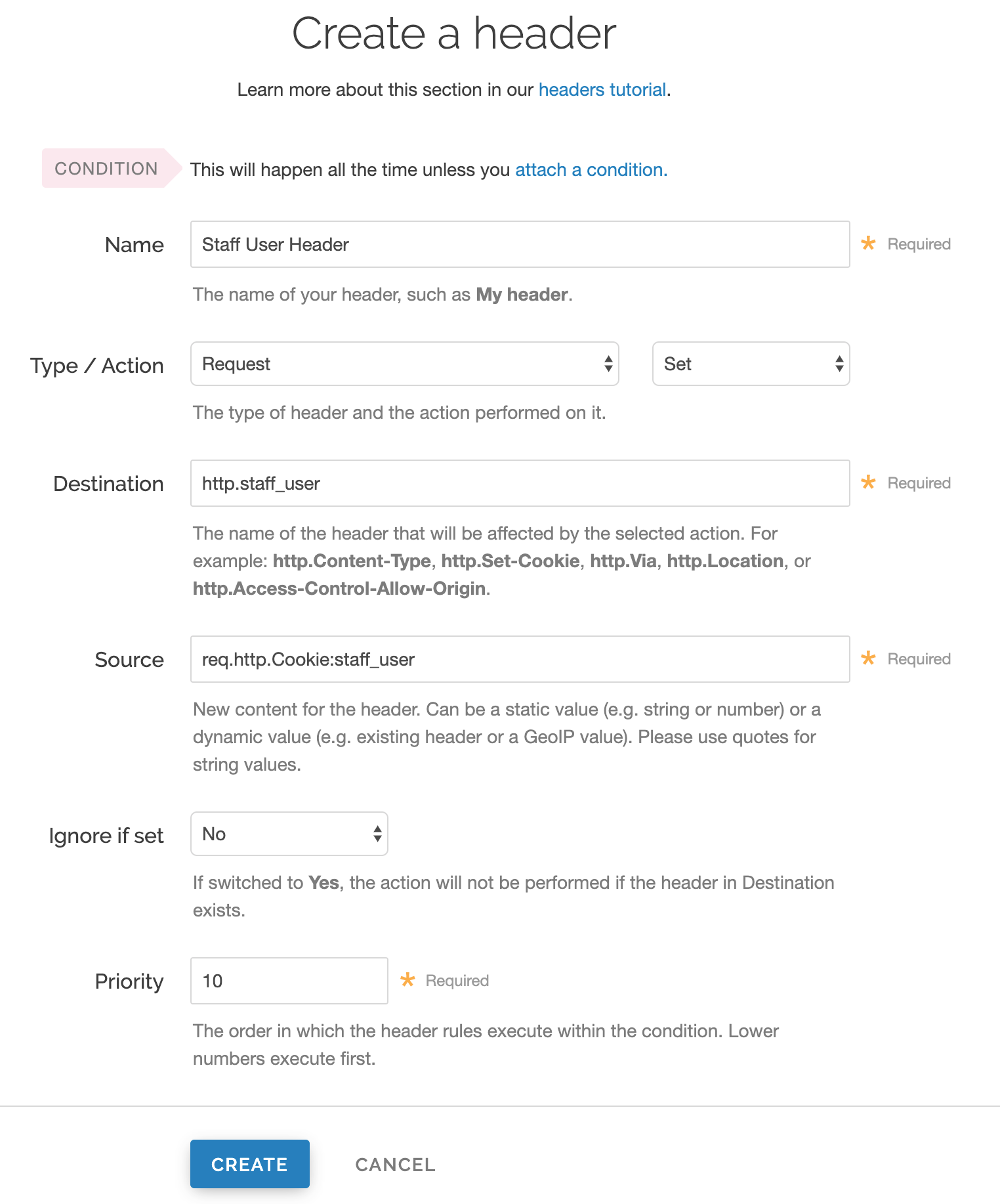- English
- 日本語
Isolating header values without regular expressions
Last updated 2020-09-24
Fastly supports the ability to extract header subfield values without regular expressions in a human-readable way. Headers subfields are headers with a body syntax style similar to value1=123value123; testValue=asdf_true; staff_user=true; or max-age=0, surrogate-control=3600 These headers include Cookie, Set-Cookie, Cache-Control, or a custom header. Fastly allows you to isolate these key values with the following syntax:
req.http.Header-Name:key-nameFor example, if a Cookie request from a client was value1=123value123; testValue=asdf_true; staff_user=true;, you could isolate the staff_user value using this logic:
set req.http.Staff-User = req.http.Cookie:staff_user;The same can be accomplished by using the subfield function:
set req.http.Staff-User = subfield(req.http.Cookie, "staff_user", ";");You can add this logic using VCL Snippets or using a custom header.
WARNING
The subfield function as well as the : accessor cannot be used for Set-Cookie headers.
Using VCL Snippets
To execute this logic based on the value of staff_user within req.http.Cookie using a VCL Snippet, you would:
- Log in to the Fastly control panel.
- From the Home page, select the appropriate service. You can use the search box to search by ID, name, or domain.
- Click Edit configuration and then select the option to clone the active version.
Click VCL Snippets.
Click Create Snippet.

In the Name field, enter an appropriate name (e.g.,
Staff User Cookie).From the Type controls, select within subroutine.
From the Select subroutine menu, select recv (
vcl_recv).In the VCL field, add the following condition:
12345# in vcl_recvif (req.http.Cookie:staff_user ~ "true") {# some logic goes herereturn(pass);}Click Create to create the snippet.
- Click Activate to deploy your configuration changes.
Using a custom header
You can isolate the value of staff_user from Cookie to the header req.http.staff_user by creating a custom header with the following settings:

Fill out the Create a header fields as follows:
- In the Name field, enter
Staff User Header. - From the Type menu, select Request, and from the Action menu select Set.
- In the Destination field, enter
http.staff_user. - In the Source field, enter
req.http.Cookie:staff_user. - From the Ignore if set menu, select No.
- In the Priority field, enter
10.
This will send the staff_user header in every inbound request.
NOTE
You can use the Attach a condition link to only create this header when it's needed. See our Using Conditions docs for more information.
Do not use this form to send sensitive information. If you need assistance, contact support. This form is protected by reCAPTCHA and the Google Privacy Policy and Terms of Service apply.